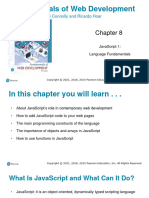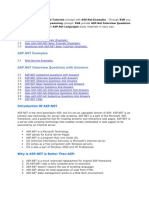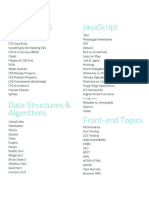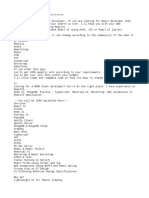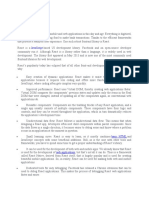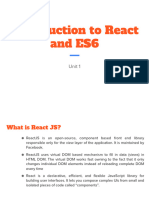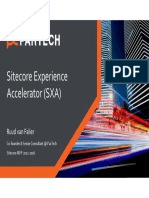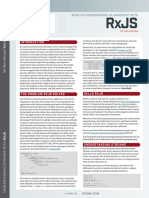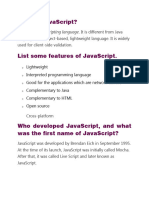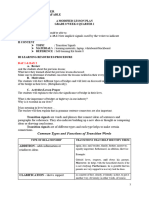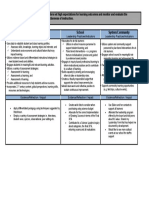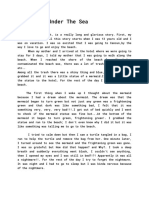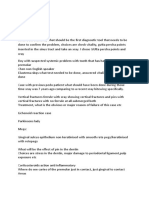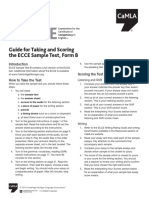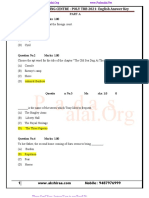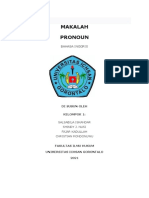Data Structures
and Algorithms
(DSA)
Common Tools for
Web Development
www.travarsa.com
�Programming Languages
in Data Structures and Algorithms
JavaScript: The most popular language for web
development, used for implementing DSA on
both frontend (e.g., DOM manipulation, event
handling) and backend (Node.js).
TypeScript: A strongly typed superset of
JavaScript, helpful for writing scalable,
maintainable code in web applications.
Python: Widely used for backend development
and writing algorithms due to its simplicity and
large library support.
PHP: Used in web development for server-side
scripting, implementing algorithms, and
handling backend logic.
www.travarsa.com
�Frontend Development
Frameworks
in Data Structures and Algorithms
React: A JavaScript library for building user
interfaces, where DSA is often used for state
management and efficient UI rendering.
Vue.js: A progressive JavaScript framework for
building user interfaces with reactive data
binding, where DSA can help optimize
performance.
Angular: A framework for building dynamic web
applications, where DSA is applied in data
handling, form validations, and optimizing
component interactions.
www.travarsa.com
�Backend
Development Tools
in Data Structures and Algorithms
Node.js: A runtime environment that allows for
server-side scripting with JavaScript, enabling
DSA implementation for backend processes,
such as routing and data management.
Express.js: A minimalistic backend framework
used in conjunction with Node.js for creating
web servers where DSA can optimize API
performance.
Django: A Python-based web framework used
for building fast and secure web applications,
leveraging DSA for tasks like query optimization
and data handling.
www.travarsa.com
�Databases
in Data Structures and Algorithms
MongoDB: A NoSQL database where DSA
concepts (like indexing, searching, and graph
traversal) are used for managing and querying
large datasets.
MySQL: A relational database where algorithms
for searching, sorting, and indexing are
essential for query optimization.
PostgreSQL: A relational database with strong
support for complex queries where DSA helps
in optimizing search algorithms and data
retrieval.
www.travarsa.com
�Version Control Systems
in Data Structures and Algorithms
Git: A version control system that helps manage
source code changes in web development
projects. Efficient algorithms in Git handle
merging, conflict resolution, and tracking
changes.
GitHub/GitLab: Hosting platforms for version
control that provide collaboration tools and
support algorithm-based searches and data
structure optimizations.
www.travarsa.com
�Task Runners & Build Tools
in Data Structures and Algorithms
Webpack: A module bundler for JavaScript
applications where efficient data structures are
used for bundling, optimizing, and managing
dependencies.
Gulp: A toolkit that automates time-consuming
tasks in web development, using DSA principles
for optimizing build processes.
Grunt: A JavaScript task runner, applying
efficient algorithms for compiling, minifying, and
automating tasks in web development.
www.travarsa.com
�Browser Developer Tools
in Data Structures and Algorithms
Chrome DevTools: A set of web developer
tools built into Google Chrome, used to debug
and optimize web applications. Can help test
and analyze the performance of DSA
implementations in frontend code.
Firefox Developer Tools: Similar to Chrome
DevTools, used to inspect and optimize
JavaScript performance and analyze algorithms
in action.
Lighthouse: An open-source tool that audits
web performance, where DSA plays a role in
optimizing the metrics like load time, rendering,
and JavaScript execution.
www.travarsa.com
�Performance
Profiling Tools
in Data Structures and Algorithms
Web Vitals: A set of metrics provided by
Google to measure essential aspects of web
page performance, where DSA can optimize
tasks like rendering and load time.
PerfMonitor: A real-time performance
monitoring tool for Node.js applications, useful
for tracking and optimizing algorithms and data
structures in backend code.
JSPerf: An online tool for comparing the
performance of different JavaScript snippets,
helping developers choose the most efficient
algorithms.
www.travarsa.com
�Data Management Tools
in Data Structures and Algorithms
GraphQL: A query language for APIs that allows
efficient data fetching. DSA is often applied in
optimizing query processing and reducing over-
fetching of data.
Redux: A state management tool for React
applications where DSA principles like
immutability and efficient state updates are
applied.
Apollo Client: A GraphQL client used for
managing data with DSA-based optimizations
for caching, query batching, and pagination in
web apps.
www.travarsa.com
�Testing Tools
in Data Structures and Algorithms
Jest: A JavaScript testing framework used for
unit testing algorithms and data structures in
web applications.
Mocha/Chai: JavaScript testing frameworks for
backend and frontend code, often used to test
the correctness of algorithms.
Cypress: A tool for end-to-end testing where
DSA can help in simulating and optimizing user
interactions with the web application.
www.travarsa.com
�Visualization Tools
in Data Structures and Algorithms
D3.js: A JavaScript library for creating dynamic,
interactive data visualizations. DSA concepts
like tree traversal, graph algorithms, and sorting
are key in building complex visualizations.
Chart.js: A simple yet flexible JavaScript
charting library where algorithms are used for
generating and displaying data efficiently.
www.travarsa.com
�Algorithm and
Coding Platforms
in Data Structures and Algorithms
LeetCode: A platform to practice DSA
problems, many of which relate to real-world
web development challenges like optimizing
search, sort, and backend logic.
HackerRank: Offers DSA challenges and
coding contests where you can practice
applying algorithms relevant to web
development.
CodeWars: A platform for improving coding
skills and understanding DSA through real-
world programming challenges.
www.travarsa.com
�Asynchronous
Handling Tools
in Data Structures and Algorithms
Promises: A native JavaScript feature used for
handling asynchronous tasks in web
development, often requiring efficient
management of asynchronous operations (like
API calls, loading data).
Async/Await: Built on Promises, making
asynchronous code more readable, and helps
manage algorithmic complexity in web apps.
RxJS: A library for reactive programming using
observables to compose asynchronous data
streams, useful for managing real-time data
flows in web apps.
www.travarsa.com
�Was this
helpful to you?
SCAN NOW TO READ MORE
Be sure to save this post
for later reading
Follow us for more:
Travarsa.com





